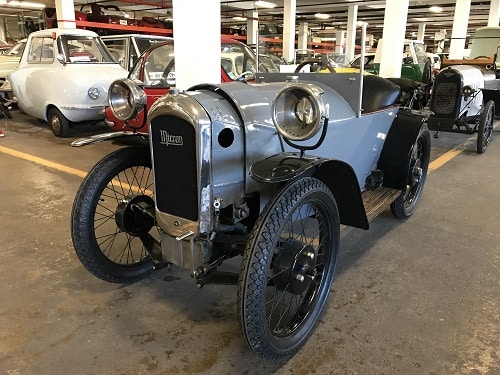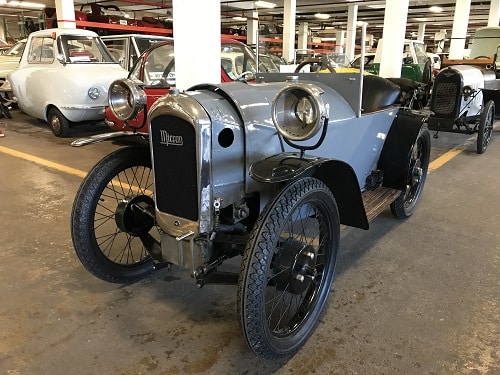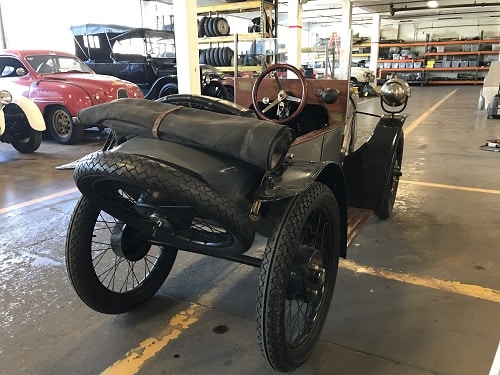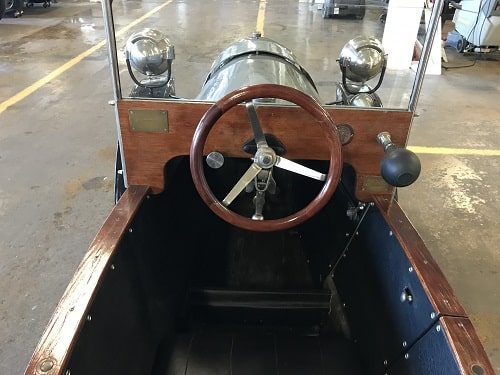
MICRON Monocar Cyclecar- 1924

In the early 1900s, by combining the utility of larger automobiles with the affordable mechanics of motorcycles, cyclecars fulfilled a sweet spot in between. They were inexpensive to build, easy to operate, and the European roadways were riddled with their narrow, spindly presence.
Designed and manufactured by Henri Jany, the MICRON Monocar was one of the smaller French cyclecars and was even said to be the smallest at the time. The head office was in Toulouse, while the cars were built in Compiegne, Oise. MICRON Monocars were mostly single-seaters, powered by single-cylinder engines of 350 cc or 500 cc.
What was unusual, especially for a cyclecar, was that the MICRON Monocar had front-wheel drive. Even more unique was its swinging engine block as a part of the steering mechanism. The MICRON Monocar featured a radiator, engine, and differential, all pivoting on a vertical axis, so that when one steered right or left, so did the entire front end, independent of the body. In fact, during the MICRON Monocar’s short run, from Feb 1924 to Oct 1927, several patents were issued by Jany, illustrating his technical prowess.
One of the MICRON Monocar’s claims to fame was its success in competitive racing. Cyclecars competed in a racing series started by the Automobile Club de France as early as 1913 and a Grand Prix for cyclecars was held in France, taking place at Le Mans in 1920. Four MICRON Monocars were entered and successfully completed the Bol d’Or, Europe’s very first 24-hour race. Because of a handwritten letter indicating copious modifications, it is thought that the example seen here may be one of the four!
The cyclecar craze ended with the introduction of low-cost, full-sized automobiles such as the Ford Model T, Austin 7, and Morris Oxford, and unfortunately, the MICRON Monocar could not compete. In the early 1930s Jany emigrated to Canada where he founded Monocar Ltd. In 1933, he produced a version adapted to the north’s severe weather conditions with rear tires on skis while the front tires were equipped with conventional chains. One is known to still exist.
Specifications:
Manufacturer: MICRON
Country of Origin: France
Drivetrain Configuration: Front-engine, front-wheel drive
Engine: Water-cooled, two-stroke, 350cc, developing 3.5 hp
Transmission: Manual; two-speed + reverse
Top Speed: 30 mph
Years of Production: 1924-1927
Number Produced: Unknown
Original Cost: $239


